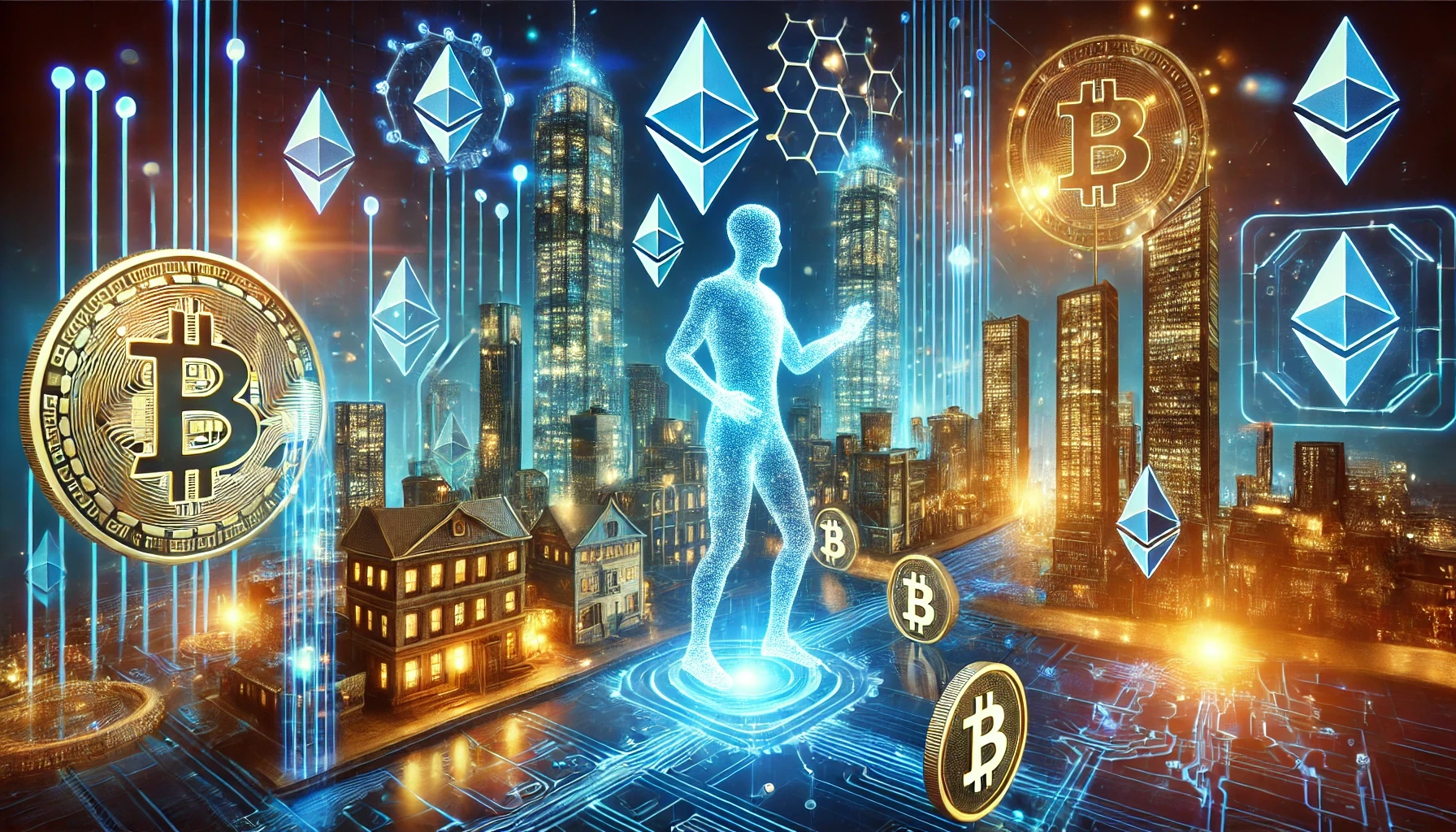1. What Is the Metaverse?
The metaverse refers to a shared, virtual universe that combines augmented reality (AR), virtual reality (VR), and the internet into an interconnected space where users can socialize, work, play, and transact.
Key Features of the Metaverse:
Immersive Experiences: 3D virtual worlds accessible via AR/VR headsets or screens.
Interconnectivity: Allows seamless movement of users, assets, and data across platforms.
User-Generated Content: Empowers users to create, modify, and monetize digital spaces.
Examples:
Decentraland: A blockchain-powered virtual world where users own land and assets.
Roblox and Fortnite: Gaming platforms with metaverse-like features, albeit centralized.
2. What Is Blockchain Technology?
Blockchain is a decentralized, transparent, and secure ledger technology that records transactions across multiple nodes. It powers cryptocurrencies, smart contracts, and decentralized applications (dApps).
Key Features of Blockchain:
Decentralization: Removes the need for intermediaries.
Transparency: Ensures all transactions are publicly verifiable.
Security: Provides tamper-proof records.
Ownership: Enables verifiable digital asset ownership.
3. How Blockchain Enhances the Metaverse
a. True Digital Ownership
Blockchain enables verifiable ownership of virtual assets like land, avatars, and digital goods. Through non-fungible tokens (NFTs), users can buy, sell, and trade items across platforms.
Example:
In Decentraland, NFTs represent land parcels that users can own, develop, and monetize.
Why It Matters:
Users retain full control of their assets.
Assets are not tied to a single platform or game.
b. Interoperability
Blockchain fosters interoperability by allowing digital assets to move seamlessly across different metaverse platforms.
Example:
A skin purchased as an NFT in one game could be used in another metaverse environment, provided both platforms support the same blockchain.
Why It Matters:
Enhances user experiences by connecting ecosystems.
Expands the utility of digital assets.
c. Decentralized Economies
Blockchain underpins decentralized financial (DeFi) systems, enabling users to earn, trade, and invest within the metaverse.
Examples of Blockchain-Powered Metaverse Economies:
Play-to-Earn (P2E): Games like Axie Infinity reward players with cryptocurrency for their in-game activities.
Tokenized Real Estate: Platforms like The Sandbox allow users to rent or sell virtual land.
Why It Matters:
Democratizes access to economic opportunities.
Incentivizes creativity and participation.
d. Enhanced Security and Privacy
Blockchain’s cryptographic features provide robust security for users’ data and assets.
Features:
Smart Contracts: Automate transactions, reducing fraud risks.
Decentralized Identity (DID): Users can manage their digital identities without exposing sensitive information.
Why It Matters:
Protects users from data breaches.
Ensures trust in virtual transactions.
e. Governance and Decentralization
Blockchain enables decentralized governance within metaverse platforms, giving users a voice in decision-making.
Example:
Decentralized Autonomous Organizations (DAOs) allow community members to vote on platform updates and policies.
Why It Matters:
Empowers users to shape the future of their digital spaces.
Fosters trust and transparency in platform development.
4. Challenges of Integrating Blockchain in the Metaverse
a. Scalability Issues
Both blockchain and the metaverse require high computational power. Current blockchains face scalability challenges that could hinder real-time interactions.
Solution:
Layer 2 scaling solutions, like Optimistic Rollups, can improve transaction speeds and reduce costs.
b. High Entry Costs
Virtual land and NFTs in popular metaverse platforms can be prohibitively expensive, limiting accessibility.
Solution:
Emerging platforms with lower-cost assets may provide more inclusive opportunities.
c. Regulatory Uncertainty
Blockchain-based assets face evolving legal and regulatory scrutiny, particularly concerning taxes, intellectual property, and anti-money laundering laws.
Solution:
Clearer global regulations will help balance innovation and compliance.
d. Technical Complexity
Integrating blockchain with AR/VR technologies requires significant development efforts and expertise.
Solution:
Collaborations between blockchain and metaverse developers can streamline integration.
5. Real-World Examples of Blockchain in the Metaverse
a. Decentraland (MANA):
A virtual world where users buy and develop NFT-based land parcels using the MANA cryptocurrency.
b. The Sandbox (SAND):
Allows users to create, own, and monetize virtual experiences and assets.
c. Axie Infinity (AXS):
A P2E game that rewards players with cryptocurrency and features NFT-based characters.
d. CryptoVoxels:
A metaverse built on Ethereum where users can build on and trade virtual land.
6. Why the Metaverse and Blockchain Are a Perfect Match
a. Shared Core Principles
Both technologies emphasize decentralization, transparency, and user empowerment.
b. Synergistic Growth
Blockchain technology provides the infrastructure needed for secure transactions and ownership in the metaverse, while the metaverse drives blockchain adoption through mainstream use cases.
c. Infinite Potential
From virtual real estate to decentralized marketplaces, the combination of blockchain and the metaverse offers limitless opportunities for innovation.
Conclusion
The integration of blockchain technology into the metaverse is not just complementary; it’s transformative. By enabling true ownership, fostering interoperability, and powering decentralized economies, blockchain unlocks the full potential of virtual worlds.
While challenges like scalability and regulatory concerns remain, ongoing innovations are paving the way for a seamless fusion of these groundbreaking technologies. As the metaverse continues to evolve, blockchain will play a central role in shaping its future, offering unparalleled opportunities for individuals, businesses, and creators.
Are you ready to embrace the next era of the internet? The metaverse and blockchain await.
